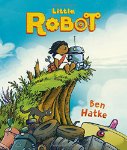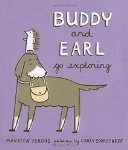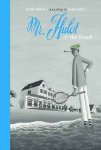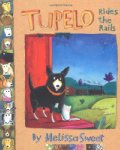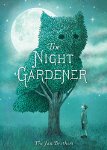I didn't really know anything about this book before I read it, though I knew from past experience than anything Sharon Creech writes is going to be marvelous. This book is indeed marvelous, on so many levels. It explores the discoveries that a young girl makes as the world around her shifts and changes and I, at least, grew very fond of her very quickly. Her voice is true and strong and it is delightful to see how she matures as the story unfolds.
Heartbeat
Sharon Creech

Poetry
For ages 9 to 12
HarperCollins, 2012, 978-0060540241
Change is a-coming in Annie’s life. Grandpa is now living
with her family because he is becoming forgetful and frail and he needs to be
cared for. Annie’s mother is pregnant, and Annie is both a little scared and
excited at the prospect of having a sibling. There is something so awesome, and
yet a little “creepy,” about the whole baby-growing-inside-her-mother thing.
The one thing
that stays the same for Annie is her running. Whenever she can, Annie runs
barefoot, just for the sake of running. For her, running is a joyous thing that
she loves to do alone. Or mostly alone. Often Annie’s friend Max runs with her.
They barely speak, and that is the way they like it. Lately though Max has
become more withdrawn and angry. His father left the family and then his
grandfather died. For Max, running is now more than just a hobby. It has become
what he hopes will be a means to an end. He hopes to escape his hometown and
his life through his running, and so now, during every run, there is the goal
of going faster and being better. There is a drive that Annie appreciates and
understands but that she wants nothing to do with. Max tries to get Annie to
join the school track team but she refuses. She refuses even when the coach at
school puts pressure on her.
Annie’s
grandfather used to be a runner, and he has trophies in his room that show how
he good he was. For some reason one day he stopped running and now here he is,
a little old man, and parts of his memories are “vanishing every day.” At the
same time his newest grandchild is growing, getting bigger and preparing for
his or her arrival into the world. How strange it is to be losing something and
gaining something at the same time. The world is sometimes a very confusing
place.
As the days go
by, Max gets more and more aggressive about his running. He needs to get a pair
of proper running shoes because he is not allowed to compete running barefoot.
Coming from a family where money is tight means that he cannot just go out and
buy a pair of shoes whenever he wants to, and Annie worries about this. She
wants Max to be able to race because he wants to do it so badly. She wants this
for him even though his compulsion is creating a rift between them, and their
friendship is suffering.
As the day of
the birth approaches, Annie gets more nervous. She and her father are going to
be present at the birth and they are going to need to help Annie’s mother
through the process. Annie is not sure she is up for the challenge, but she
does her best. She watches the birth movie (which makes her feel queasy) and
studies the coaching manuals so that she will know what to do when the time
comes.
As all these
changes swirl around her, Annie dives into an art assignment that she has been
given. She needs to draw an apple for one hundred days. She needs to create one
hundred drawings of an apple, and at first she cannot imagine how she will
manage it. Over time though she begins to see the apple in a deeper way, to
appreciate the nuances of its shape and colors and she begins to understand why
she was given the assignment in the first place. Learning how to see things,
really see them, is an important skill to have if you are an artist. It also a
valuable skill to have when you are a person who needs to find their place in
the world.
This
extraordinary book explores the way a twelve-year-old girl learns about the
people in her world, and we see her trying to negotiate the trials that life
throws her way. In the process, she starts to figure out what she wants and who
she is, and she discovers that most people, and most challenges, are a lot more
complicated than they at first seem.
 This is not a picture Book
This is not a picture Book This is not a picture Book
This is not a picture Book


